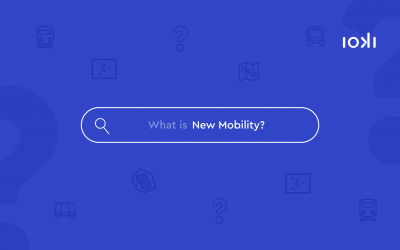Rhine-Main Region: The On-Demand Hotspot in Germany
Hesse not only plays a leading role in innovative traffic concepts but also in the area of autonomous mobility within German public transport. The most recent autonomous project is the barrier-free EASY-Shuttle, operating through the eastern part of Frankfurt-Riederwald from the 18th of November 2022 until the end of July 2023. Passengers can book the shuttle free of charge and on demand, enabling them to reach their destination more flexibly. The shuttle operates within the limits of the autonomous level 4, meaning that the shuttle has a trained operator instead of a driver on board, who is mainly supervising the journey. Intervention happens only if necessary or if a restart of the vehicle is required. This might happen due to the sensitively calibrated sensors that, for safety reasons, break earlier than needed.
The project is a collaboration of the transport association Rhein-Main-Verkehrsverbund (RMV), the transport operator Verkehrsgesellschaft Frankfurt (VGF), the regional transport company Frankfurter Nahverkehrsgesellschaft traffiQ and the software companies EasyMile and ioki. The cooperation was particularly successful as the ioki software was able to quickly connect with the vehicle software due to the specially developed interface (also called API = Application Programming Interface). This enabled a quick implementation onto the streets of Frankfurt-Riederwald.
This self-driving traffic is not the first EASY-project in the Rhine-Main region. The RMV has already realised a variety of autonomous projects with the vehicle manufacturers EasyMile and Navya. For example, in the health resort area of Bad Soden-Salmünster over 3,000 people have tested the EASY-Shuttle, while between September 2020 and 2022 another 7,000 passengers have used the autonomous shuttle around the Eberbach monastery. Autonomous vehicles have also been operating on the streets of Frankfurt before. During an eight-months test period, over 25,000 people could travel along the banks of the Main, in order to strengthen the trust of passengers in self-driving vehicles. The latest EASY-shuttle is another innovative project in the RMV portfolio making the ioki hometown of Frankfurt, as well as the Rhine-Main region, to a future-oriented on-demand hotspot in Germany.
This and more autonomous projects in the region of Rhine-Main emerge from the pilot project EASY (= Electric Autonomous Shuttle for You). The RMV, together with changing partners, wants to analyse how self-driving vehicles can be integrated into public transport systems of the region. The Frankfurt University of Applied Sciences and the House of Logistics & Mobility (HOLM) accompany the project scientifically.
The Future is Autonomous
Not only in Germany but also on the EU-level, self-driving traffic is a focus topic. For example, the autonomous on-demand offer EASY in Frankfurt-Riederwald is a partner in the EU-funded SHOW project (= SHared automation Operating models for Worldwide adoption), which aspires the integration of autonomous fleets into public passenger transport and on-demand services and thereby promoting sustainable city traffic.
Autonomous driving doesn’t stop in 2023. In the upcoming two years the RMV, together with ioki, CleverShuttle, Mobileye as well as HEAG mobile and the kvgOF, wants to create a big flagship project for on-demand mobility. The world’s first autonomous shuttle-fleet, operating within the autonomous level 4, will be driving through Darmstadt fully integrated in the regular operation of the regional public transport system. The Intel subsidiary Mobileye will be providing the vehicle software, while CleverShuttle, HEAG mobile and the kvgOF will realise the local operation. The intelligent software from ioki will be the heart of the autonomous on-demand offer creating a smooth connection between the vehicle software and the proven on-demand platform.



